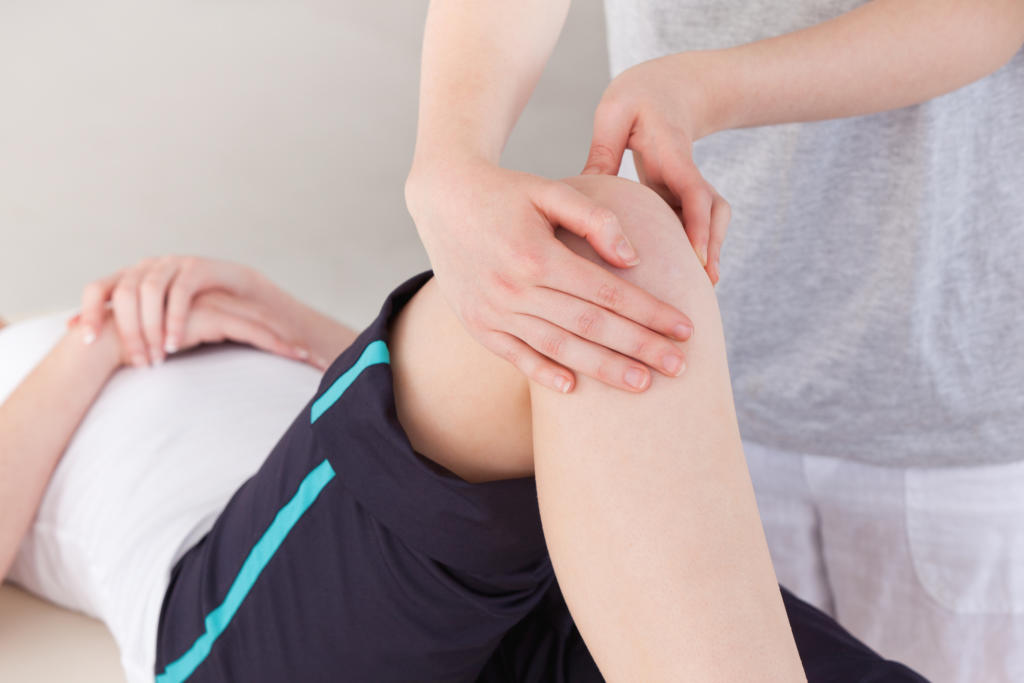
The knee is the largest joint in the body and one of the most complex. Its size, location and functionality make it vulnerable to a host of injuries, from sprains and tears to broken bones. Many patients require intense physical therapy following a knee injury, rather than simple rest and ice.
Many knee injuries happen harmlessly. As an athlete, you may have slipped in the grass during a game or got entangled with another player fighting for the ball. Within a short timeframe, the area around the joint starts to swell, so you practice RICE (rest, ice, compression and elevation).
While these steps are effective in the short-term, alone they are not enough for knee injuries. What are the most common knee problems and what can happen when they are neglected?
Torn Anterior Cruciate Ligament (ACL)
Professional athletes often experience torn ACLs, but the injury can happen to anyone. Sports that focus on the lower legs, including football, basketball, skiing and baseball increase risk.
This injury occurs when the femur slips backward onto the tibia before sliding forward, where it gets stretched out, tears and “ruptures”. If a complete tear results, your knee won’t be stable. Delaying medical treatment can affect the surrounding ligaments, which may become sprained or torn from picking up the slack.
If the ACL is not completely ruptured, it can eventually heal with targeted, intense physical therapy, yet ruptures often require surgery. However, research has shown that surgically replacing the ligament increases your chances of experiencing a second torn ACL, which halts how well the joint heals or could lead to osteoarthritis. These individuals may find they never regain complete joint strength and have a greater risk for future knee injuries.
Sprains
While knee sprains are considered a lighter injury, they typically require a brace. Not using one can affect how well the joint recovers. Down the line, individuals may continue to experience sprains in the same spot or have chronic joint instability.
Stress Fractures
Any joint or bone that helps support body weight can experience a stress fracture; many athletes experience more than one. Ignoring the fracture can result in a larger crack or break that takes longer to heal. In some instances, individuals experience a chronic fracture that never fully heals, resulting in long-term pain and reduced mobility.
Patella Dislocation
With this injury, the kneecap is knocked out of its natural position. In many cases, it returns to its normal positioning right away, but not every time. In extreme instances, an individual is left immobile, in severe pain. Common among athletes who regularly switch directions, this injury might not seem serious on the surface, but it may become a permanent condition if the patella continues to get dislocated.
Meniscus Tear
The meniscus cushions the area between the femur and tibia. Activities that place a great deal of stress on the knee joint, including regular rotations, may damage this piece of cartilage, resulting in a meniscus tear. Injured individuals report a popping sound or feeling the joint slip.
For older adults, a meniscus tear may be the result of long-term wear and tear on the joint but for teens and younger adults, it’s often the result of a sudden sports injury. If unaddressed, the torn meniscus places stress on the articular cartilage, causing the joint to degenerate and degrade with time.
Why Your Knee Injury Isn’t Healing
Whether you seek medical treatment or are relying on rest and ice, your knee may not be fully healed for the following reasons.
- You Didn’t Rest Long Enough: Knee injuries don’t heal overnight. Moderate soft-tissue injuries require at least two weeks of rest to property heal. From there, you can gauge if your joint is ready to engage in a high-impact activity. Going back to practice or your regular workout routine too soon may result in worsened tissue damage and subsequent pain.
- RICE Is Not Enough: Many knee injuries require more attention. Although RICE is ideal right after the injury occurs, don’t make this your only treatment plan. If the swelling and pain don’t go away soon after the injury occurs, seek medical attention.
- Too Much Weight On It: Knees are a weight-bearing joint that handles a significant amount of stress, so any excessive weight bearing may exacerbate the pain and swelling. To help the injury heal, a doctor may give you a pair of crutches to help you get around.
Whether you experienced a torn ACL or have a nagging sprain, you don’t have to live with the pain. Dedicated knee therapy can help the joint heal properly and regain full range of motion.
To learn more, contact us today.

